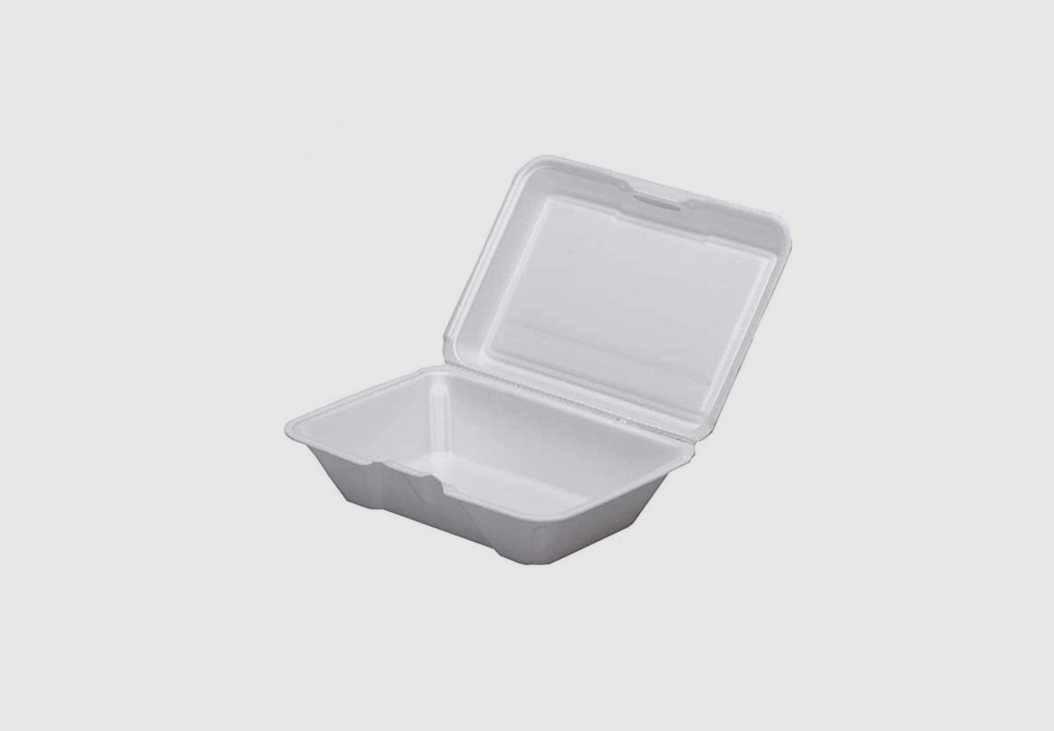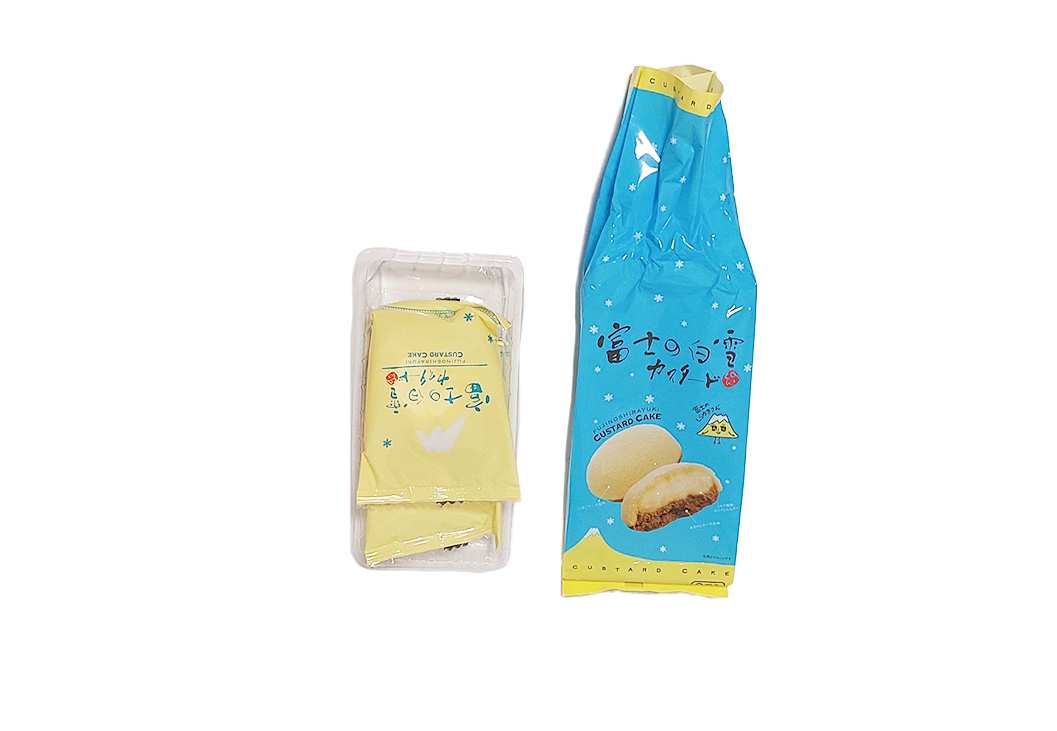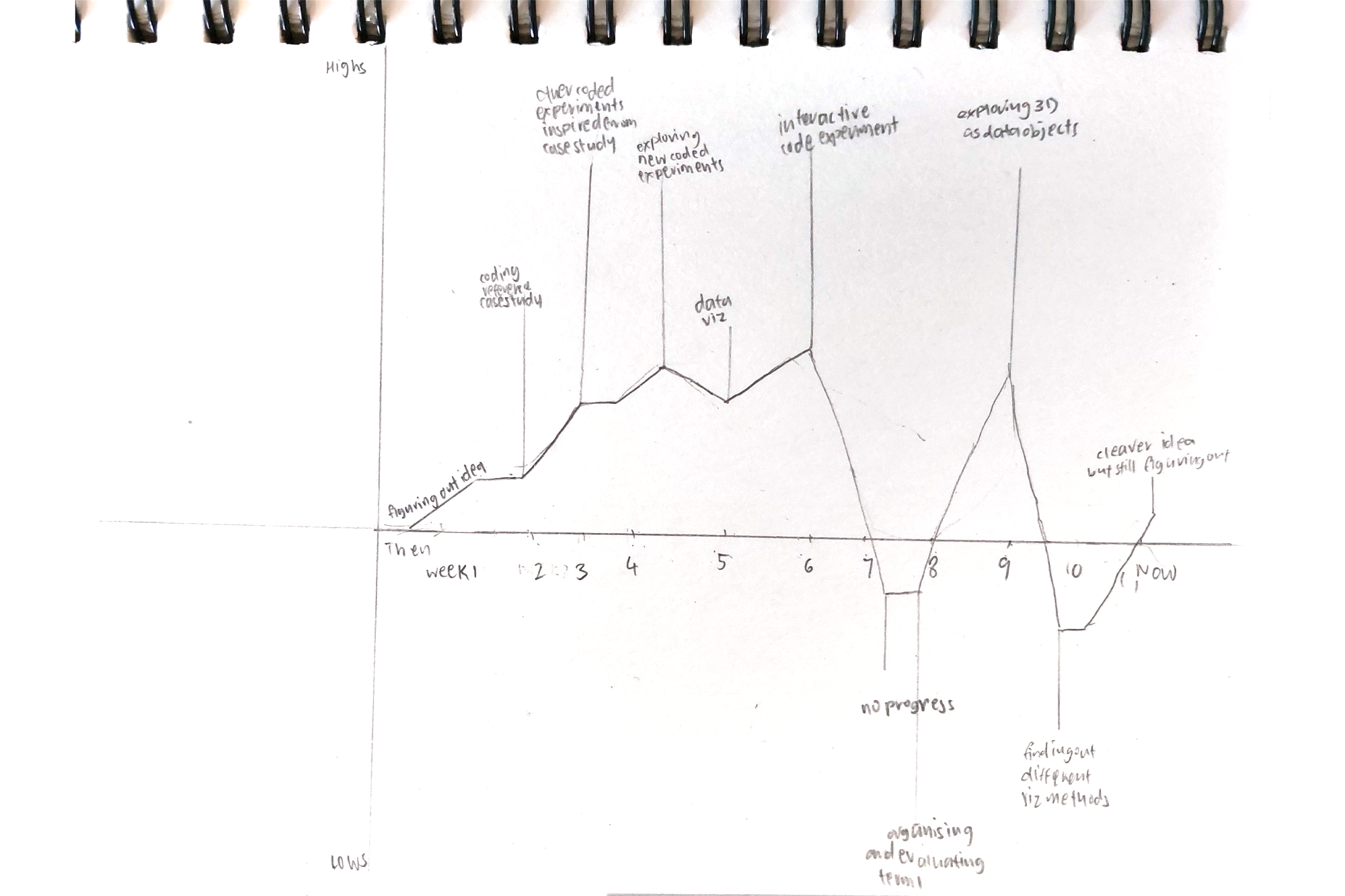- Week 11
- October 24'22

1. Dissertation — Presentation
Over the weekend, we were tasked to create a 5 minute presentation that reflects our progress, changes and doubts for our dissertation.
In the end we ran out of time for each of us to present individually, so instead we were broken up into pairs for discussions. My partner was Aditi! We took turns presenting in front of each other and then asking one another for feedback on things we weren't sure of or gaps in our research. I had a fruitful discussion with Aditi and got a lot of valuable insights. I realized that there were some similarities in our research! And because of it, we were able to relate to similar struggles we were having; for example, pin-pointing a target audience in Bengaluru for her and Jakarta for me. Both our topics kind of fall under the tech and nature umbrellas but approached through different lenses. I really admire her passion for exploring interactions and specifically living media interfaces! I think its a research scope that will be increasingly relevant as the population continues to swell and space continues to shrink.
↘Link to my slidesComments:
Exercise paper filled by Aditi after my presentation. I realized that I lack literature on persuasive design, to which she also mentioned. Andreas also mentioned in class that most of our RPO was weak in discussing the design aspects of our research. I'll keep that mental note for my dissertation.
2.1 Graduation Project — Sketch reaction
I consulted Andreas about my ideas and below are some of the comments! He emphasized that its important for us to explore as much as possible before narrowing down to one idea so he encouraged me to try all of them, and keep collecting new ideas if it pops into my head in the future. I also got some casual feedback from Aditi during our class presentation : - ) In the future, I'd love to get more feedbacks from my peers.
2.2 Experimenting — Interaction
What's the loudest and most annoying sound can plastic make?
I started thinking about how to create a 'shock' factor whenever people approach the artefact. A loud siren? A sudden spotlight shining in their face? What would make people pull back their hand? To start, I decide to explore the initial idea which is through the use of sound. Only when I started thinking about plastic and the sound it makes did I realize how loud it is, and is sometimes one of the first things I hear whenever someone is approaching from a distance. Then I started to wonder, what is the loudest and most annoying kind of sound that plastic makes?
(1) Plastic containers are uneccasarily loud whenever they are bent, making it super hard to discreetly access the food inside. In the words of Buzzfeed, the world's biggest snitch is a plastic cake container.
(2) Styrofoam packages are the most common type of plastic waste found in Jakarta Bay (LIPI) and it also produces one of the most unpleasant squeaking sound when scratched or rubbed.
Staging the Interaction
It's difficult to rely on imaginaition alone; sometimes the things that plays out so well in our head ends up not making sense in the real world. I decided to try and stage how I imagined the interaction between the object and the person happens through the power of video editing.
While searching through my pantry for a potential subject for the experiment, I decided to use this custard cake snack (pictured below) because it made a lot of noise. It was only when I started to disassemble the snack did I realise..its so much plastic just for 2 tiny pieces of cake!! The cake is first packed individually in clear plastic, then packed in a yellow packaging which has the branding elements, placed together in a transparent plastic container, before finally stuffed together in the blue plastic packaging.
Trial 1
Trial 2
After Thoughts
Putting together the video helped me a lot in terms of identifying the details that needs to be ironed out. Where would the sensor be placed? Initially I had a misconception about the coverage of motion sensors and thought that by placing the object in the centre of a square platform and had motion sensors on each of the 4 sides, each sensor would be able to cover each sides of the square and detect any objects entering the square space haha! Obviously I was super wrong about that. More on exploring motion-triggered sensors later on. My next question was..what happens next, after the sound triggers? Could people still reach out to the object as normal, rendering it a bit redundant? Or maybe the object would also make sounds of plastic, making a statement about micro-plastic and that plastic has contaminated everything, including us through the air we breathe, the food we eat, and the water we drink? Other than that, I'm glad I did this. I'm surprised how convincing the video looks, almost as if there was invisible plastic that the camera couldn't see.
What's Next?
After discussing with Andreas about the Plastic Plague idea, these are some areas for me to refine and explore over the weekend.
(1) Application
Right now the end goal of the artefact is to be placed in an exhibition space. Flesh out the idea in terms of its display, interaction, space etc.
(2) Sound Bank
Explore possibilities of creating different sounds with the selected plastic materials via varied treatments (e.g. crumpling). Method could be through sampling or synthesizing.
(3) Artefact Context
What is the object that is in the center of the interaction? What is it's significance to Indonesia? what is it's significance globally?

Sketch from Andreas on possible placements for the sensors; embedded on the object or above the object. I'm strongly leaning towards embedding the sensors on the object because it looks more natural, which he agreed. Encouraging an organic interaction between the people and the object is an important part of the whole concept.
2.3 Experimenting — Ultrasonic Distance Sensor
Motion Triggers
The idea for Plastic Plague is to have an installation with a motion triggered set up that would activate a plastic sound effect as a person is reaching out to touch an object; visualizing the concept of the invisibility of plastic and plastic pollution as a whole because of the pervasive use of plastic in our daily routines. So to break them down in terms of inputs and outputs, the input would be motion and the output would be sound. I decided to take it one step at the time and concentrate on the testing out the motion sensor first. There are different kinds of motion sensors with different uses, I decided to test out ultrasonic sensors first before maybe moving on to PIRs.
↘Tutorial from Create ArduinoHow it works
Ultrasonic sensors are used to measure the distance of an object from the sensor through sound waves. One terminal sends out soundwaves while the other receives it. It records the time taken for the sound wave generated to bounce back to calculate the distance between the sensor and the object. The recorded distance is displayed in the serial monitor.

Materials: (1) Arduino UNO, (1) Ultrasonic Sensor HC-SR04, (4) Male to Male Jumper Wires, (1) Breadboard
In action!
Ultrasonic sensors are very sensitive! Even when I moved my hand away, the value never goes too high because I was in a small space.
Relating back to my initial idea, I started to wonder if there is a way to make the sound intensity vary according to distance? What if the sound of plastic could be heard even as someone is entering the exhibition space, then gets louder and louder as they walk around the room and gets closer to the object? I found this interesting project that I could potentially refer back to in the future.
↘Motion Feedback MP3 PlayerHow to incorporate sound as an output?
To take the idea further, I started thinking about the circularity of the project. Could the installation go beyond just talking about sustainability but also acts as a living, breathing example of it, for instance, by having the whole thing powered by a renewable energy? This consideration about circularity also came up during one of my consultations a few weeks ago with Andreas. There was a fleeting idea about making my design repositry website completely solar powered but it didn't go beyond that. Maybe this could be an opportunity for me to revisit and explore the concept further
↘Sustainable interaction design: invention & disposal, renewal & reuse ↘Solar Powered Website by Low Tech ↘Solar Powered Security Sensor2.4 Experimenting — Sensor Alarm
Buzzer Alarms
OK, putting the ideas aside, now I wanted to have sound as part of the output. I found a tutorial that incorporates an audio distance sensor into the set up. It uses a Piezzo Buzzer (right) that initially acts like the alarm cars have while backing up. I think this is a small step closer to achieving the core concept of the idea so I decided to try it out!
↘ Tutorial for the setupHow it works
The gaps between the beeps from the buzzer gets increasingly shorter the closer someone is to the ultrasonic sensor. The code for this set up is similar to the previous one, just that this one adds an additional digital pin for the buzzer.

In action!
I borrowed my friend Aditi's buzzer but it was broken haha! Instead of an alarm it produces ticking sounds, but hey it still works!! (will buy a new one and revisit)
Next Steps
(1) Package the device to see how it looks embedded on an object (2) Explore other sound output devices
2.5 Experimenting — Sound Bank
Styrofoam container
I attempted 5 methods to produce sound from the styrofoam; friction/rubbing, scratching, crushing, ripping, and squeezing. I was in the look out for high-pitched sqeaks that makes your teeth hurt. The sounds are produced with just my hands and the surface of a table. Surprisingly, crushing and ripping didn't produce any interesting sounds so I left them out in the end. Out of all the attempts, I think this sound (left), made by the friction between the styrofoam container and the table, is possibly the most the winning sound!
↘Link to sound bank
Plastic Container
Unfortunately the trials with the plastic container was rather unsuccessful. I think the plastic container I used was too thin to produce the loud ronks that I was hoping to hear. Who knew plastic density has such a huge effect on the sounds they produce? Upon some light research, plastic containers or PET (Polyethylene Terephthalate Plastic Type) plastic are the most common types of plastics used for food and beverage containers because of its flexibility and durability. It is manufactured in various grades, with higher grade products having a higher density. For my next attempt, I will be on a look out for a higher grade plastic container!
↘Link to sound bankWhat's Next?
After trying out the technology and collecting the sounds, next is to find a way to combine both of them! Another thing to consider is what the object at the center of the interaction would be. Andreas had also suggested for me to explore how the installation would be applied in different countries and cultures.
"Plastic Planet", an exercise using an uneccasary object in class.
3. Weekly Roundup — Panic
What have I been doing the past 11 weeks? I remember always feeling like I was getting somewhere but looking back it really seems like I was going in circles. I also have been neglecting on my CPJ and it hardly makes sense. Sometimes I get frustrted that I'm not able to get my point across while talking about my research topic, when, looking back, I hadn't even made time to collate my findings. I was more worried about finding a niche topic that I hadn't properly documented my process. Time management is not my strong suit, but talking to my lecturer and peers helps me to ground myself and not get too caught up in my own world.
I aim to do more experiements on my other ideas that I hadn't explored yet next week. The next one I might try is the Seaing is Believing (names are not final) idea. The idea is more solid than the others in terms of context, execution, and aim, but I think that's also why I kind of steered away from it. It's hard to explain but I guess to put it to words, I was less enthusiastic about it because it feels like there's less to explore beyond the technicalities? Or that I feel like the 'solution' I'm presenting for the problem is something that's expected and has been done countless of times just in different contexts. Or maybe I just think too much. Anyway, Andreas' suggestion to make the interaction more dangerous I think is a great opportunity to bring some excitement to the idea!
I will dedicate a good chunk of my time to work on my dissertation. There were a looot of holes in my RPO that I hope to fix and improve on.

.png)
.jpg)
.png)

.png)









